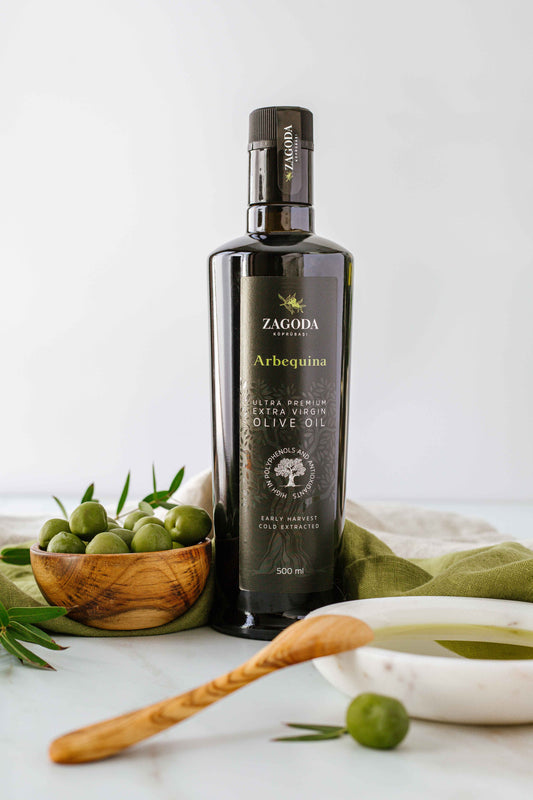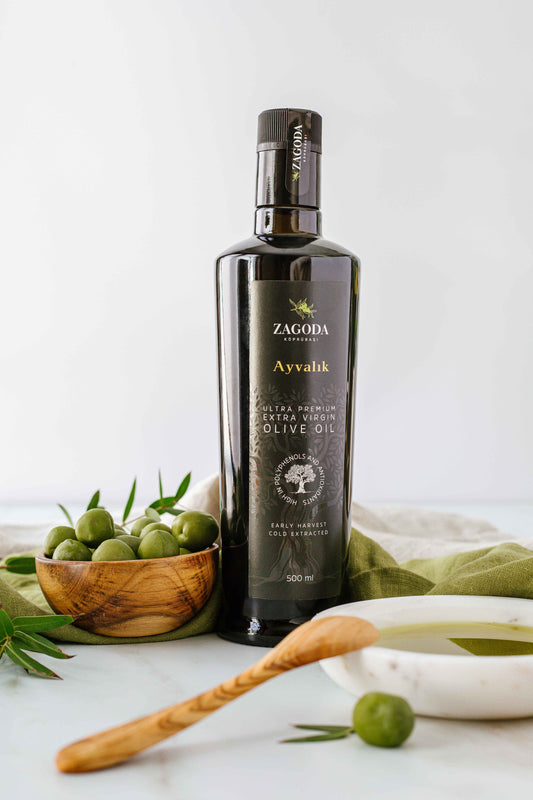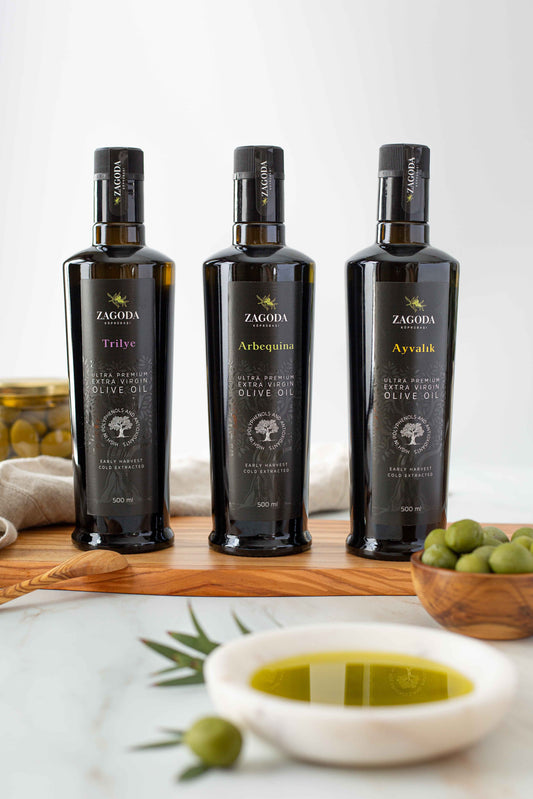Introduction: More Than Meets the Eye
Have you ever stared at a bottle of extra virgin olive oil and wondered why some are golden yellow while others are deep green? It's like nature’s own rainbow of health! But here’s the catch—color doesn’t always tell you what you think it does. The shade of olive oil is influenced by a variety of factors, from the type of olive used to the time of harvest. Understanding these nuances can help you choose the perfect oil for your needs.
Just like we shouldn’t judge a book by its cover, we shouldn’t judge olive oil by its color alone. Many people believe darker green olive oil is always better, but the truth is far more surprising. Let’s dive into the colorful world of extra virgin olive oil (EVOO) and uncover the secrets behind its shades.
What Affects Extra Virgin Olive Oil Color?
1. Olive Variety Matters
Not all olives are created equal! Just like apples come in different types—Granny Smith, Honeycrisp, Fuji—olives have different varieties too. Some produce green-hued oil, while others lean toward yellow. The soil and climate where they grow also play a role in their final shade. Even within the same variety, slight differences in color can occur due to weather conditions during the growing season. For example:
-
Arbequina olives produce a lighter, golden-colored oil with a mild, buttery flavor.
-
Koroneiki olives give a deep green oil with a bold, peppery taste.
-
Picual olives fall somewhere in between, depending on when they’re harvested, often resulting in a balanced flavor with both fruity and peppery notes.
2. Harvest Time Plays a Huge Role
Imagine biting into a banana that’s still green—it’s firmer and more bitter than a ripe one. The same goes for olives! Early-harvest olives (picked while still green) have higher chlorophyll levels, making the oil look vibrant green and giving it a more intense, peppery flavor. Late-harvest olives (when they turn purple or black) have less chlorophyll and more carotenoids, giving the oil a golden hue and a smoother, milder taste.
3. Chlorophyll vs. Carotenoids: The Battle of Pigments
-
Chlorophyll (found in green plants) gives olive oil its green color and has antioxidant properties, helping to protect the oil from oxidation. This pigment not only influences color but also contributes to the oil’s fresh, grassy flavor.
-
Carotenoids (found in carrots and tomatoes) make oil look golden and provide vitamin A benefits. They also act as antioxidants, helping to protect cells from damage. The higher the carotenoid content, the richer and warmer the golden hue of the oil.
4. Processing and Storage Make a Difference
Even if an oil starts out a deep green, it can turn golden over time. Why? Light, heat, and oxygen break down chlorophyll, causing a natural shift in color. This oxidation process also affects the oil’s flavor, sometimes making it taste milder over time. That’s why high-quality olive oil is stored in dark glass bottles—to protect its nutrients, maintain its fresh taste, and keep its color vibrant!
5. Is Fake Olive Oil Messing with the Color?
Unfortunately, yes. Some lower-quality oils are mixed with refined oils to give a fake golden glow, misleading consumers. Others add artificial chlorophyll to make them appear greener than they naturally would be. The best way to avoid fake oil? Stick to brands that are transparent about their sourcing and production methods, like Zagoda Olive Oil.
Does Color Indicate Quality?
Surprisingly, no! While color can hint at the olive variety and harvest time, it doesn’t tell you whether the oil is top-notch. The oil’s chemical composition, freshness, and processing methods play a much bigger role. The best way to determine quality is through taste and aroma. A high-quality EVOO should:
-
Smell fresh and fruity (like grass, herbs, or even bananas!)
-
Taste peppery, slightly bitter, and rich
-
Have a smooth but bold finish
How to Choose the Right Olive Oil for Your Needs
Now that you know color isn’t everything, how do you pick the perfect EVOO? The key is to focus on quality markers like freshness, aroma, and taste. Checking for a harvest date on the bottle and choosing reputable brands ensures you’re getting the best oil possible.
-
For Salads & Dipping: Go for early-harvest, greenish oil. It has a robust, peppery kick!
-
For Cooking & Baking: A golden-hued, late-harvest oil has a milder, buttery taste, perfect for sautéing and roasting.
-
For Health Benefits: Any high-quality, cold-pressed EVOO (regardless of color) will give you antioxidants and heart-healthy fats.
Conclusion: Look Beyond the Color
Next time you pick up a bottle of olive oil, remember—it’s not the color that matters most, but what’s inside. Extra virgin olive oil is packed with flavor and health benefits, whether it’s green or golden. Trust your taste buds and focus on quality over appearance for the best culinary experience. After all, great taste and nutrition come from the right olives, not just the right shade!
Want to experience authentic, high-quality EVOO that’s both delicious and nutritious? Visit Zagoda Olive Oil Shop today and taste the difference yourself!





